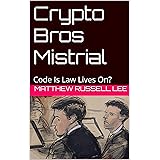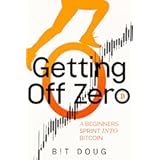Have you ever wondered about the dynamic world of Bitcoin trading? The accompanying video provides an excellent visual guide to understanding how to trade Bitcoin on the Delta Exchange. However, mastering crypto trading requires more than just following steps. It demands a deeper comprehension of market mechanics and risk protocols. This supplementary guide will expand on the concepts introduced in the video. We will delve into advanced strategies and crucial considerations. Our aim is to equip you with robust knowledge. This will help you navigate the volatile Bitcoin futures market effectively.
Understanding Bitcoin Futures: Beyond Spot Trading
The video briefly highlights the importance of selecting “futures” over “options” on Delta Exchange. Spot trading involves buying or selling cryptocurrencies for immediate delivery. In contrast, futures contracts are agreements. They obligate parties to buy or sell an asset at a predetermined price and date. This distinction is critical for advanced traders. Futures offer unique advantages for speculation and hedging. They also introduce complexities like leverage and margin requirements.
Futures contracts derive their value from an underlying asset. For Bitcoin futures, Bitcoin is the underlying asset. They allow traders to speculate on future price movements. One can profit whether the market rises or falls. This is accomplished through “long” or “short” positions. Long positions profit from price increases. Short positions profit from price declines. Nevertheless, they amplify both gains and losses. This inherent risk must be managed diligently. High leverage, like the 100x mentioned, demands meticulous attention.
A key concept mentioned is “premium decay” in options. This does not directly apply to standard perpetual futures. However, understanding funding rates is crucial. Funding rates are periodic payments. They are exchanged between long and short traders. These payments keep the futures price close to the spot price. A positive funding rate means longs pay shorts. A negative rate means shorts pay longs. This mechanism influences trading decisions significantly. It is an often-overlooked aspect of Bitcoin futures trading.
Navigating Delta Exchange: Enhanced Market Analysis
The video walks through accessing the market option and viewing various cryptocurrencies. It correctly points out the diverse selection beyond Bitcoin. While the video focuses on BTC USDT, traders should explore other pairs. Ethereum (ETH) and Solana (SOL) are popular alternatives. Each asset possesses unique volatility characteristics. Furthermore, market sentiment varies greatly between them. Diversification can mitigate risks. Conversely, it can also spread focus too thinly. Traders must select assets aligning with their analysis.
Chart analysis is foundational to informed trading decisions. The video demonstrates switching timeframes. It shows 1-hour and 15-minute intervals. However, a comprehensive analysis requires multiple timeframes. Traders typically use higher timeframes for trend identification. Daily or 4-hour charts establish the broader market direction. Lower timeframes, like 5-minute or 1-minute, are for precise entry and exit points. This multi-timeframe analysis approach provides conviction. It helps avoid “noise” inherent in short-term fluctuations. Understanding candlestick patterns and indicators becomes paramount here.
Beyond simple line charts, experienced traders utilize advanced tools. Volume analysis provides insight into market strength. Order book depth indicates current supply and demand. Furthermore, incorporating technical indicators enhances predictive capabilities. Moving averages identify trends. Relative Strength Index (RSI) measures momentum. Bollinger Bands assess volatility. These tools, when used in conjunction, paint a clearer market picture. They help confirm trading signals. However, no single indicator is infallible. Confirmation from multiple sources is always preferred.
Executing a Bitcoin Futures Trade: Precision and Order Types
The video guides viewers through placing a buy order. It specifies market versus limit orders. Market orders execute immediately at the current best available price. This ensures quick entry but can incur “slippage” during volatile periods. Slippage occurs when the execution price differs from the requested price. In contrast, limit orders allow traders to set a specific price. The order only executes if the market reaches that price. This provides price control but does not guarantee execution. For advanced traders, understanding both types is essential for optimal trade management.
Leverage, as demonstrated by the 100x option, can drastically magnify returns. A small price movement can yield substantial profit. However, the same principle applies to losses. A 1% adverse movement on 100x leverage equates to a 100% loss of initial margin. This extreme magnification necessitates robust risk management. Many professional traders employ conservative leverage. They often use 5x to 10x maximum. This preserves capital during unexpected market shifts. The minimum trade size of 0.001 BTC allows for smaller positions. This is ideal for beginners to practice risk-free or with minimal exposure.
Furthermore, understanding margin requirements is crucial. Initial margin is the capital required to open a leveraged position. Maintenance margin is the minimum equity needed to keep the position open. If the account equity falls below the maintenance margin, a “margin call” occurs. This prompts traders to add funds or risk liquidation. Liquidation involves the exchange forcibly closing the position. This prevents further losses. Traders should monitor their margin levels carefully. Maintaining sufficient capital is a non-negotiable aspect of leveraged trading.
Advanced Risk Management: SL, TP, and Beyond
Setting Stop Loss (SL) and Take Profit (TP) orders is a fundamental risk management practice. The video clearly illustrates how to set these parameters. A Stop Loss order closes a position automatically. This limits potential losses when the market moves unfavorably. A Take Profit order closes a position automatically. This secures gains once a target price is reached. These orders automate exits. They remove emotional biases from trading decisions. Neglecting them is a common pitfall for new traders.
However, SL and TP placement requires strategic thought. They are not arbitrary points. SL levels are typically placed below support or above resistance. They are determined by technical analysis. For instance, a common strategy might involve setting SL at a point where the trade idea is invalidated. Take Profit targets are often based on Fibonacci extensions or previous resistance/support levels. A healthy risk-reward ratio is paramount. Professional traders aim for a minimum 1:2 or 1:3 ratio. This means risking $1 to potentially gain $2 or $3. This statistical edge significantly improves long-term profitability. Proper risk management dictates how much capital is risked per trade. A common rule is risking no more than 1-2% of total capital per single trade.
The video correctly notes that charges and GST apply to trades. These fees, including trading fees and funding rates, accumulate. They can erode profits, especially for frequent traders. Understanding the fee structure of Delta Exchange is essential. Traders should factor these costs into their profit calculations. High-frequency trading, without sufficient edge, can quickly become unprofitable due to accumulated fees. Continuous monitoring of your profit and loss (P&L) and adjusting positions is vital. This ensures adaptability to evolving market conditions. Successful Bitcoin trading demands disciplined execution and consistent review of trading performance.







